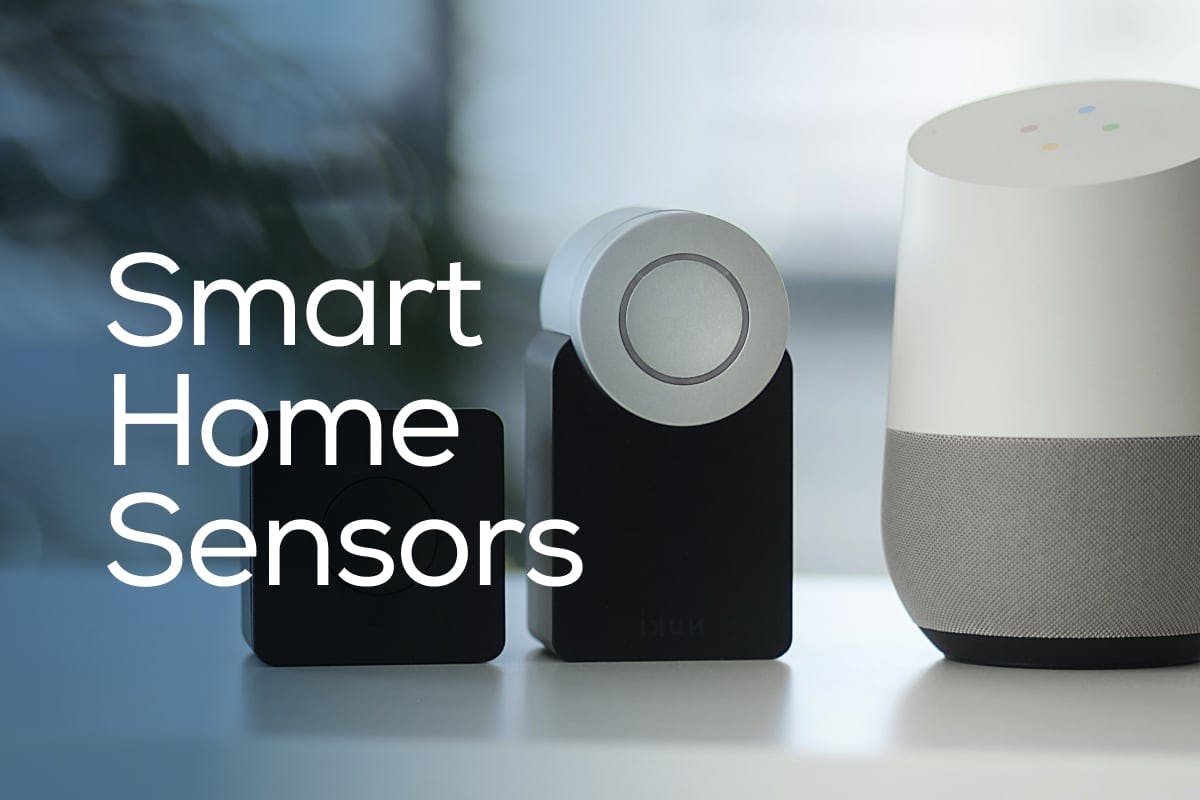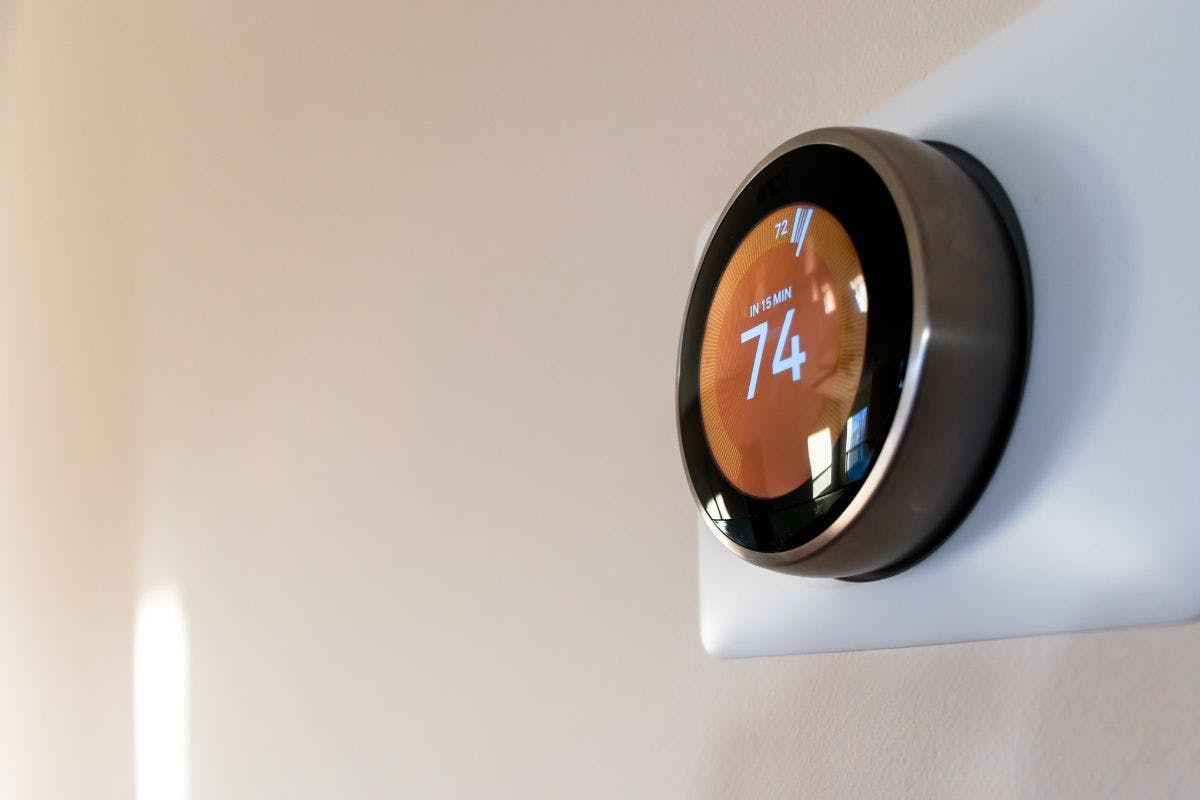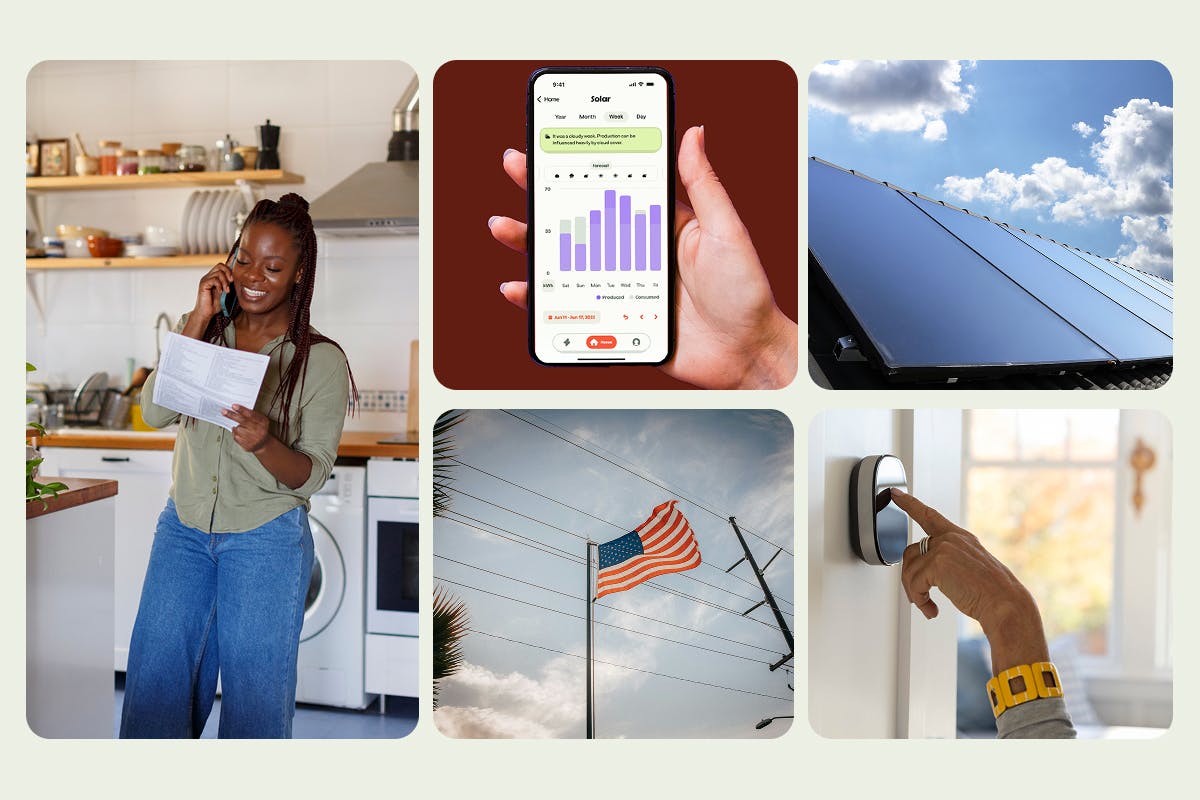Smart Home Sensors Can Be Important Home Safety Measures
Last edited

Author
Andrew Giermak
Solar and Electrification Writer and Editor

Editor
Andrew Blok
Electrification and Solar Writer and Editor

It’s understandable to think of smart home technology as new, cool ways to control your home theater or program your kitchen to have coffee and oatmeal ready before you wake up in the morning.
Smart sensor technology, though, can be used to keep everyone in your home safer and stop major damage before it becomes too major and too dangerous. Smart home sensors can be utilized to instantly alert you and emergency personnel to a fire, high carbon monoxide levels, smoke, leaks, or a break-in of your home. Smart sensors are easier to use and can do more important tasks than ever. Here are ways smart home sensors could be important safety tools in your home.
See how much you can save with home energy changes
What Is a Smart Home Sensor?
A smart home sensor alerts you to a change in your home’s status through a smartphone app or other smart device. Think of it like your home’s eyes, ears, and nose, monitoring for potential issues. Connected home sensors serve as valuable protection for your home and family, as they can detect when something isn’t operating as it should.
Smart home sensors can let you know if your home has too much moisture, that carbon monoxide has been detected, or there is a significant leak in your home. When paired with other smart devices, they may even be able to fix those issues automatically.
What Are Different Types of Smart Home Sensors?
A smart home uses connected, interacting devices to operate systems and processes around the house like lighting, security, cleaning, and entertainment systems. Smart devices work on a smart home ecosystem or hub such as Apple HomeKit, Google Home, Amazon Alexa, or SmartThings. The hub can receive voice commands to do tasks such as adjusting the lights or setting the thermostat.
A smart sensor is more of a "set it and forget it" type of device that interacts with other devices in your smart home. Smart home sensors include leak detectors, motion sensors, door and window sensors, and air quality monitors.
Leak/moisture sensors
If you are away from your home and a pipe breaks, you’d likely not know what had happened until you opened the door to a house full of water. However, excess water in your home isn’t always as obvious as a busted pipe. It can also mean a slow drip that creates high humidity or a leak that’s hidden until your walls and floors warp, or you have damage to cabinets and other furniture.
A leak sensor or moisture detector can let you know if your home has a leak or running water issue. It works by either detecting water directly or by being installed in your water supply line to detect unexpected flow or changes in water pressure.
If the sensor detects a problem, it can send an alert to your smartphone app. Some leak detectors can turn off the flow of water or activate a sump pump to prevent further damage until the issue can be fixed.
Smart home water sensors may be useful near water heaters, dishwashers, sinks, refrigerators, washing machines, or any other place at risk for water leakage. Getting an early alert from your moisture sensor can mean the difference between a small leak and flooding your house.
Some of the best water/moisture sensors are made by Flo by Moen, iHome, Fibaro, Proteus, Flume, D-Link, and Phyn. DIY smart leak detectors are usually small, battery-powered sensors that can be placed in hard-to-reach areas, and sometimes contain multiple sensors attached to a single device.
Leak detectors are usually easy to install and connect to your home via Bluetooth and/or Wi-Fi. However, some leak detectors need to be connected directly into your water pipes to allow them to shut off the water, which may require the services of a plumber or other specialist.
When the device comes in contact with water, an alarm will usually sound, and you will receive a push alert and/or email on your connected device. Keep in mind you need to verify compatibility with third-party systems like Google Assistant, Amazon Alexa, or Apple Siri.
See how much you can save with home energy changes
Motion sensors
Motions sensors send alerts when someone or something comes within a specified range or area. A common example of a motion sensor is a video doorbell or external floodlight.
A smart home motion sensor lets you always know what is happening around your home. If someone is moving around your house, you would get an alert letting you know where motion was detected.
Depending on the compatibility of your sensors, you can set them to do different commands when they detect motion, such as turning lights on or recording with your video doorbell or other cameras.
You can also use motion detectors to turn on a light when someone walks into a room or turn it off when no motion is detected after a certain period of time. Reducing unnecessary electricity use can help you save on your electricity bill.
Companies such as Aqara, Centralite, Hue, Ring, and Aeotec make some of the industry’s leading motion sensors, so look for the one that integrates best with the rest of your devices.
Contact sensors
A contact sensor uses magnets and is triggered when the two parts of the sensor either make or lose connection with each other. They’re typically installed on doors and windows to alert when opening or closing occurs, but can also be installed on interior cabinets and other areas.
Contact sensor technology can let you know what’s happening around your house. This can range from knowing when your toddler has opened a cabinet to learning about an opened window that’s letting out all of your heat.
Monoprice, Aqara, Fibaro, YoLink, Eve, and others make contact sensors.
Smoke/carbon monoxide detector
We’ve had smoke alarms and carbon monoxide detectors in homes for decades. But as loud as those devices can be, they can’t help if you’re away from the house when something bad happens.
With a smart sensor, you can be notified as soon as smoke, fire, or carbon monoxide is detected. That way, you can call the fire department if you’re away from home or use a sensor that alerts the fire department itself.
A smart smoke detector could be paired with smart lights. Together, they can turn on all the lights in the house if a fire is detected, waking people up so they can escape.
One of the most popular versions of this sensor is the Google Nest Protect, but X-Sense, Kidde and First Alert also make a variety of options, including the OneLink Safe & Sound detector. Another option is Roost, which has created a Wi-Fi-enabled battery you can install in your current detectors to give them smart features. In addition, some smart home hubs like Amazon’s Alexa have features like Alexa Guard that can listen for the sound of your smoke alarm, and alert you when the alarm is detected.
Freeze/temperature sensor
Think of a freeze sensor as the logical complement to a leak sensor. While a leak sensor tells you when a leak has occurred, a freeze or temperature sensor can warn you the temperature has reached a point where pipes could freeze and burst, preventing leaks from happening in the first place.
You don’t have to live in an area with regular below-freezing temperatures to benefit from a smart home temperature sensor. If you’ve ever had a pipe burst when it’s cold outside, you’ll understand how important it can be to have some advance warning of unusual temperatures.
Roost, Honeywell, Ring, and Ecolink all have freeze sensors that will communicate with your smartphone and can be added to your larger smart home ecosystem.
Air quality monitor
While many modern weather services now include information about air quality, they still can’t account for what’s happening in your own backyard. For example, if you live in a neighborhood close to a factory, or your area is prone to wildfires, it’s helpful to know what’s in the air so you can keep your family safe and healthy.
Good air quality sensors live inside your home and track potential problems such as carbon dioxide, volatile organic compounds, and particulate matter. Many of them can even link with your air conditioner or smart thermostat to provide solutions like increased internal cycling when you need to clean your home’s air.
The leading air quality monitor brands include Eve, Awair, Netatmo, Airthings, and uHoo. Be on the lookout for options that track carbon monoxide, smoke, and allergens.
Smart thermostat
A smart thermostat gives you remote monitoring and control of your home heating and cooling. It’s also programmable to, for instance, keep temperature and humidity within a certain range, or monitor issues such as filter status, or system functions.
Whether using the smart programming capability, or keeping up with the thermostat on your phone, you can avoid costly damage such as frozen pipes, your HVAC running to an excessive or damaging amount, or issues such as mold due to high humidity.
Major Smart Sensor Brands
Given the number of and scope of smart devices and smart sensors out there, there are many brands in the market. Here are some of the biggest brands to consider.
- Aqara: Aqura has motion sensors, contact sensors, water sensors, air quality sensors, and indoor environment sensors. Aqara offers its own smart home hub.
- Centralite: Centralite offers motion sensors, door sensors, water sensors, and temperature and humidity sensors plus more smart devices.
- X-Sense: X-Sense’s smart smoke and carbon monoxide detectors monitor for fire and carbon monoxide with real-time alerts and fire/emergency dispatching.
- Fibaro: Among many smart devices and hubs, Fibaro’s sensors include smoke, water, carbon monoxide, motion, and door/window sensors.
Smart Sensor Shopping Considerations
When you’re shopping for smart sensors, here are some things to consider.
- Functionality: First, what do you need the sensor or device to do? Smart or not, a new smoke detector needs to do the detecting and alerting you expect it to do. Getting the right sensor may be complicated, so make sure you’re getting the main safety function you think you are.
- Compatibility: Smart devices work on a smart ecosystem or hub, such as those from Google, Apple, Amazon, or Samsung. If you’ve got one of these systems, you want a new sensor to work with the other smart devices you’re already using.
- Ease of use: You want the smart sensor to be easy to set up and use with the phone or computer you’ll be most likely to use. Take your tech level into account here. You don’t want complicated tech or a poorly functioning app to make a stressful situation worse.
Prevent Major Home Damage With Smart Home Sensors
Smart home sensors are becoming more popular than ever, and they are increasingly easy to install. You can even get devices that have multiple smart sensors integrated into one device.
Whether you use a smart home ecosystem like Apple HomeKit, Google Home, Amazon Alexa, or SmartThings, there are a wide variety of smart gadgets that can integrate with those systems. Many can even be programmed to interact with devices like Apple HomePod, Google Home, and Amazon Echo to control them, or with virtual assistants like Apple Siri, Google Assistant, or Amazon Alexa to communicate with them.
Smart home sensor technology can tell you what is going on in your home, so you can prevent issues and damage from fire, water, and theft before they occur.
Smart sensors, devices, and appliances may be great for their own features and convenience. Integrating and maximizing smart technology can also be part of home electrification. You can find out how to save energy, which also means saving money, while having all the safety measures and features of smart home devices with our home energy advisor.
See what home electrification can do for you:
Frequently Asked Questions
What does compatibility mean with smart devices?
Compatibility means how a smart device communicates with and works with a smart hub or ecosystem and how it works in a network with multiple integrated smart devices.
Why would you need an air quality monitor indoors?
Knowing your home’s indoor air quality is safe is an important health matter. An air quality monitor might help you stop problems such as mold, allergens, dust, carbon monoxide, and other air pollutants which could be harmful, especially to people already susceptible to asthma or allergies.
Does a smart device use extra energy?
Yes, a smart device uses power to operate. Most smart sensors or devices are designed to use a very small amount of power from a battery or an outlet.


